
The bounty of nature
Bizarrely, there are people who seem to feel riled up when encountering someone like themselves. For example, people who think they are great become vexed when they see someone else who holds him/herself in high esteem. People who want to be indulged but can’t seem to do so get annoyed when they see how indulged people behave. Don’t be pompous. Don’t be spoiled. The more you put a stop on your mind, the less you realize your true intentions. If they could just say, “I envy you~,” that would be end of it, but the weakness of not being honest weighs down inside and flips the switch of irritation and pent-up anger.
In my book, all living things have a similar nature. We and plants are like peas in a pod. For instance, weeds taught me that living things that thrive where they want to are possessed of a strong vitality. The same can be said of us homo sapiens. Stems that grow quickly are more likely to break, while those that grow slowly are less likely to. Strong things thrive alone, while the weak grow in clusters. As I cast an eye over the plants and trees growing in my garden, I likened them to emotional trauma. Unless banished completely, it will sprout forth again someday.
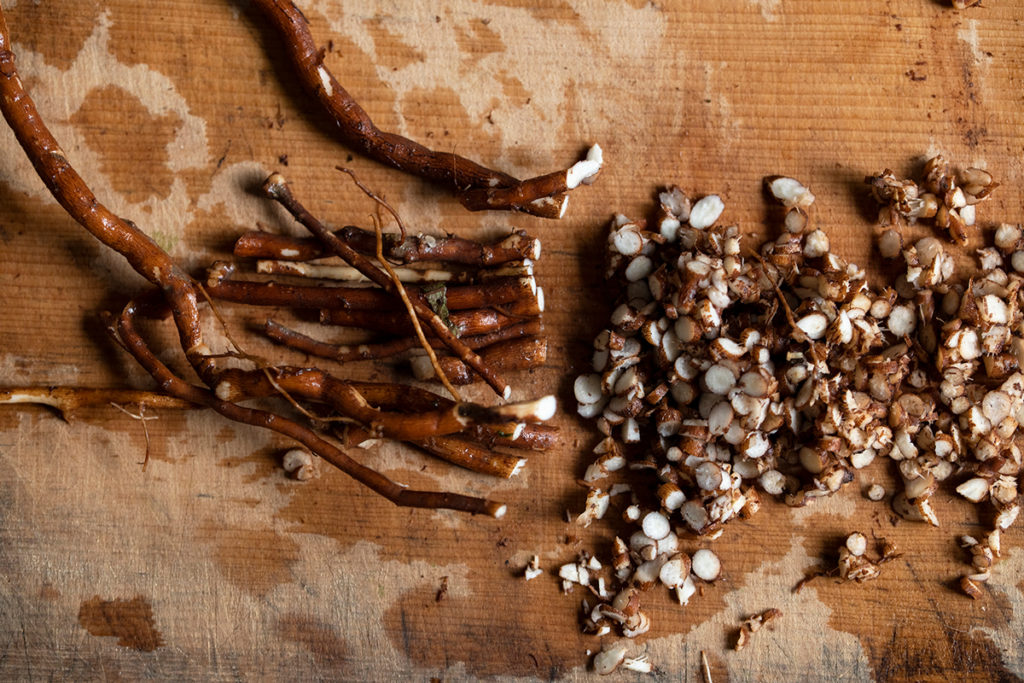
When using others as a mirror, we pretend not to notice others or admonish them, but when one faces plants, it is easier to look squarely at oneself. It seems that there are as many pointers for a “natural way of life” as there are creatures living in nature, so the more you encounter nature, the more likely you are to uncover your own winning formula.
As one summer ended, someone told me how to get rid of the yabugarashi, said to be impossible to eradicate. The idea was to wrap the long vines around the roots and place them at the base, thus ending their role as the “link between heaven and earth”. I am unable to verify that this is true, and so far, I have not been able to demonstrate it. However, even if it doesn’t wither when wrapped up into coil, there is no doubt that the essence of life lies in the fact that it is complete when its role is finished. As long as we are alive, we have a role to play.

What exactly is our role? I’m sure there are as many roles as there are people on God’s earth. We are good at putting our thoughts into words. Footloose and fancy-free, we have the luxury to choose what we do. Above all, we are emotional creatures. I assume that the reason why we have such an opulent environment is because we have so much to do. If we feel we can’t stay somewhere anymore, we are free to get up and move on. If the going gets tough, we can switch it up to be more enjoyable. Perhaps more significantly, we can taste the gamut of emotions that come with overcoming various hardships. It occurred to me that trembling underthe vibrations of these emotions would be an important role for us so blessed with such a bountiful environment.
I dug the roots of the yabugarashi and washed them with a scrubbing brush. It was supple and strong. As I made the furikake (sprinkles) and took a bite, I was reminded of the preciousness of being alive.
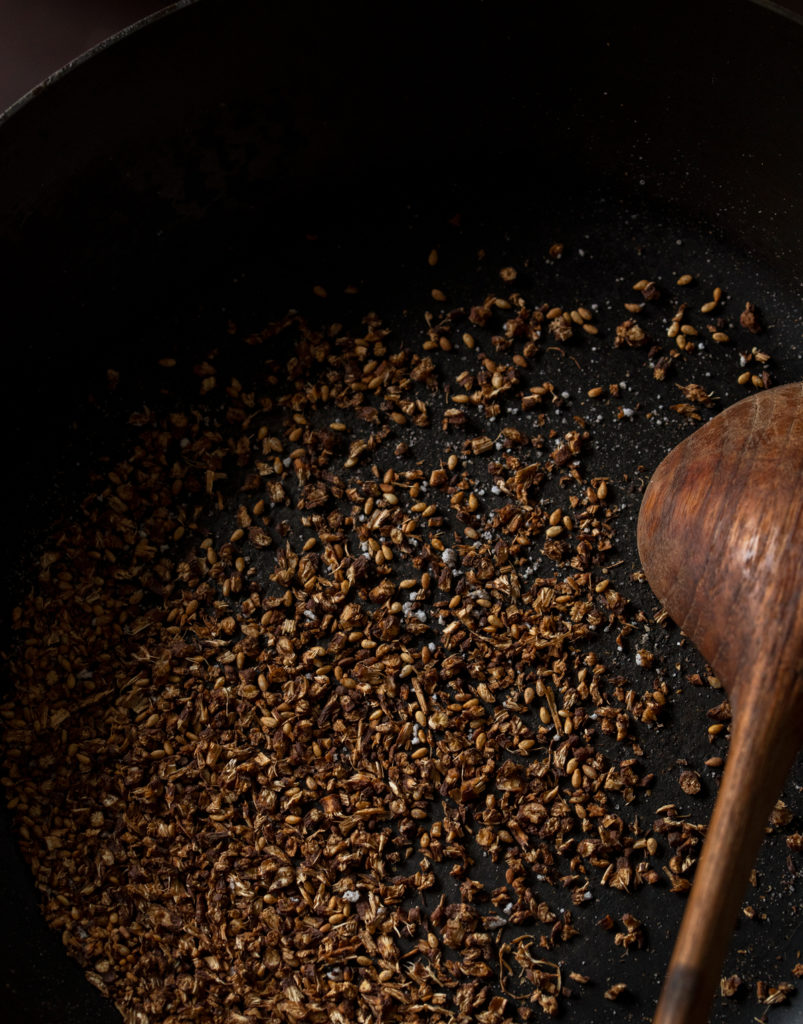
■Grass on the Plate Recipe 04
Sprinklings of yabugarashi (furikake)
Ingredients
Yabugarashi, Salt
Directions
1. Dig up the yabugarashi, wash the roots and leaves, separate the roots from the leaves, and chop each up. The roots are stubborn, so chop as finely as possible.
2. Heat an iron frying pan and fry the roots slowly over a low heat. When they change color and starts to smell fragrant, add the leaves and a good amount of natural salt, and fry until they start to brown. Add spices to taste and serve over rice, salads, or as a topping for baked goods.
■Plants Index
Weeds in this story
Cayratia japonica Vitaceae Genus Cayratia
A plethora of wild weeds grow all around, in our gardens, plots and by the roadside. Sprouting naturally throughout all of Japan, they are also found on the Korean Peninsula, China, and India amongst other places. Also known as bimbo gusa and bimbo kazura (Erigeron philadelphicus.)
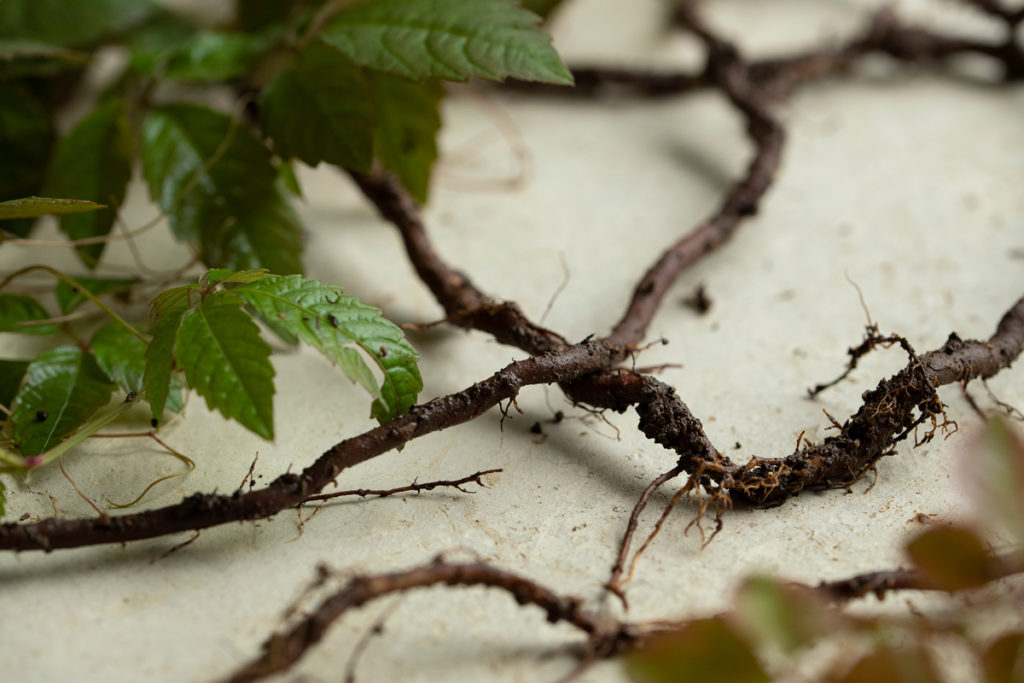
Used in China since ancient times as a remedy for skin conditions. Once fully grown in autumn, roots can be powdered and applied to the skin or infused in a hot bath. Can also be fried in oil or finely sliced for to make kinpira (chopped burdock root/carrot cooked in sugar and soy sauce.)
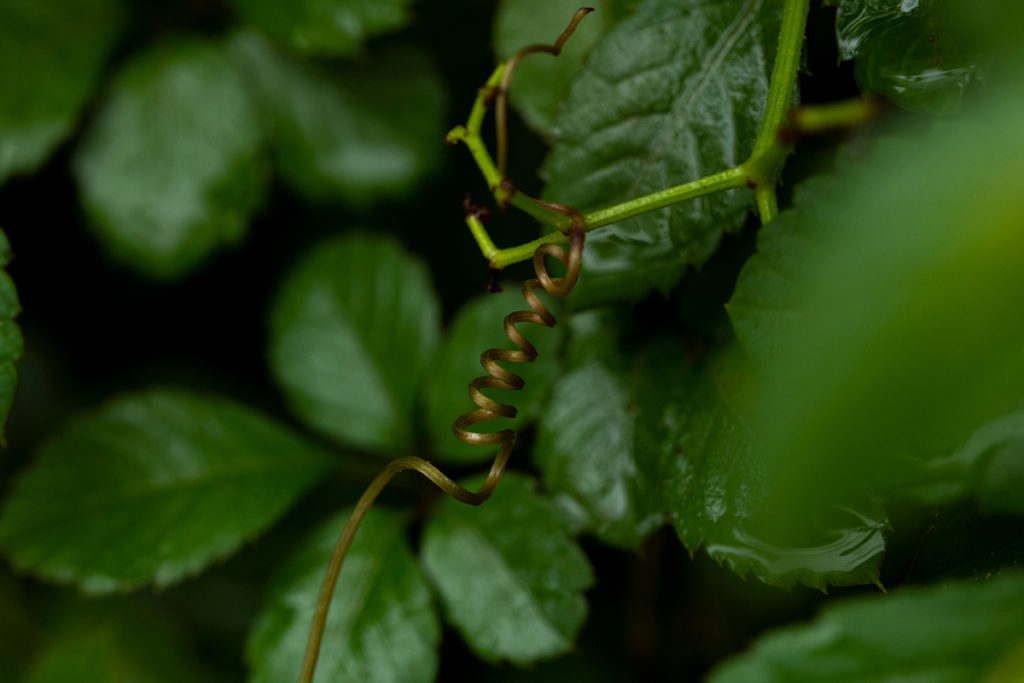
Tendrils sprout from 5 small leaves and reproduce by tangling around fences and other structures Named yabu-garashi because the bushes it covers cannot photosynthesize, and die.
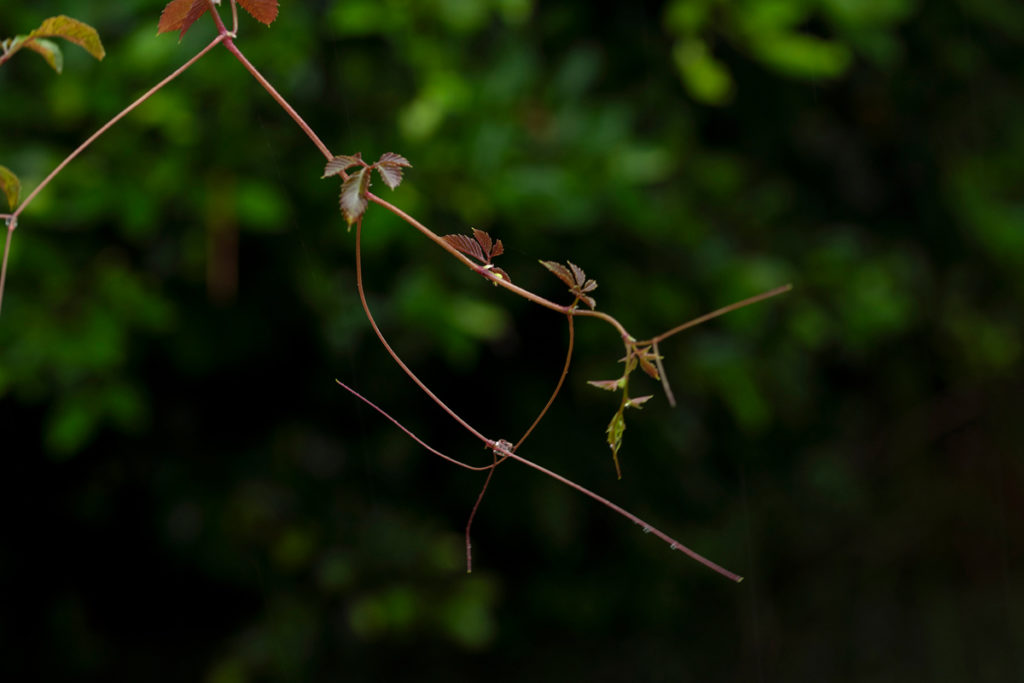
Perennial vines sprout in early spring, multiply vigorously in summer before wilting in winter, reaching a height of 2-3 meters. The leaves at the tips of the vines are delicious when picked and eaten as tempura.

The summer brings delightful green, orange, and pink flowers. Also called candle flower due to its shape. One of the nectar plants.
Yoco Kawashima
As a child, Kawashima nurtured her love of “weeds” into a passion for soil and water. Guided by these memories in 2000 she began artistic activities focused on weeds, traveling to study how they are used. She then expresses their attraction in various forms such as food, drink, decoration, and therapy. Publications include Kusa to kurasu (Living with Weeds; Seibundo Shinkosha). Kawashima lives in Okinawa Prefecture. Arinomama ni ikiru (Life As Is; Lingkaran Books) released in late April.











